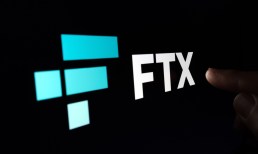It’s no wonder, then, that 76% of healthcare firms said they are willing to innovate their accounts receivable (AR) systems to get cost savings, as reported in a Digitizing B2B Payments Tracker done by PYMNTS in collaboration with Deluxe.
“Medical claims payments are one of the most intricate and challenging types of B2B payments in the marketplace,” Chris Clausen, executive director of product management at Deluxe, told PYMNTS.
Trimming Costs, Saving Time
Hospitals and clinics seeking payment for services rendered generally send claims to patients’ insurance plans, along with any additional documentation that may be helpful in explaining the procedures performed. Insurance carriers then review the claims to assess whether they are covered and then, if so, disburse the funds.
Digitizing more of these processes could produce substantial savings. A PYMNTS study found that a claim submitted manually often costs providers $3.30 and takes six minutes to process. In contrast, sending the same claim electronically costs only 97 cents and takes just two minutes per claim.
Advertisement: Scroll to Continue
See also: Deep Dive: A Digital Prescription for Treating the Medical Sector’s Manual AR, AP Pains
Sending All the Details
Healthcare providers also might be able to trim costs by using swifter, less hands-on methods for transmitting the accompanying documentation. Sending all details together in an automated, digital way could reduce important frictions.
There is one regulatory hurdle: There is no federally approved standard for properly delivering medical documentation through digital channels in a HIPAA-compliant manner, whereas there is such a standard for claims submissions.
Hospitals and health clinics spend time and money not only on delivering information to insurance carriers, but also on seeking information from those business partners about the status of claims. When claims are approved, insurance carriers have several options for disbursing funds. Many use electronic funds transfer (EFT) systems, virtual cards or paper checks.
Avoiding Costs, Getting Clearer Visibility
The latter can be cumbersome for providers to receive, however, with medical professionals reporting that they must take an average of five minutes to process paper checks, but just three minutes to process digital payments.
Insurance companies benefit from digital payment methods, too. They may find that using electronic methods enables them to avoid the costs attached to manual methods and to get clearer visibility into payment statuses. This allows them to more easily answer healthcare providers’ questions, sparing both parties from time-consuming phone calls.
Digital transaction tools further allow insurance companies to deliver plenty of information to explain which portions of the claimed expenses are being funded and why, thus heading off protracted back-and-forth disputes — or at least reducing the length of these discussions.
Embracing Digital Tools
Another challenge that can be solved with modernization is fraud, waste and abuse, where artificial intelligence (AI) and machine learning are being deployed to not only spot fraud, but also to pinpoint billing code errors and unnecessary procedures performed by overly cautious practitioners.
“Over the last three to five years, we have seen more and more payers begin to use artificial intelligence for fraud, waste and abuse detection, and they’re seeing strong results,” Beth Griffin, vice president of healthcare, cyber and intelligence at Mastercard, told PYMNTS in a recent interview, pegging the problem at over $300 billion per year.
For both healthcare providers and insurance carriers, embracing digital tools helps free up time and funds. “The good news is that technology is now bringing significant new benefits to an industry that deserves a break,” Clausen concluded.




